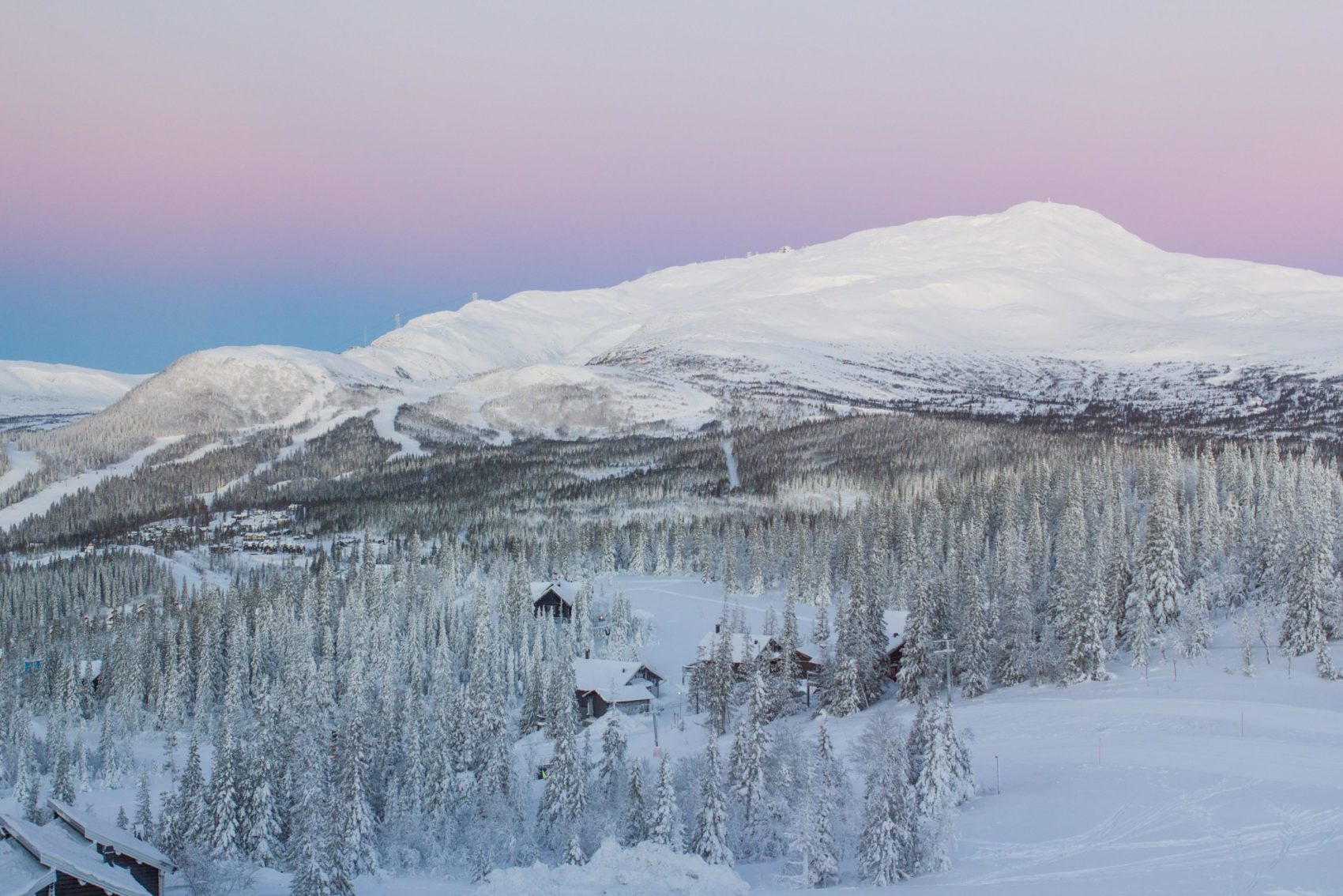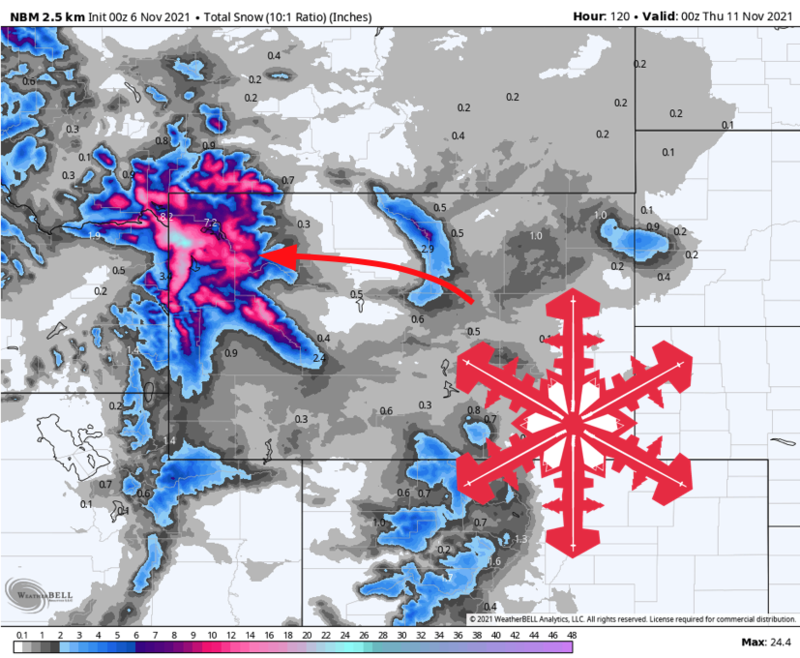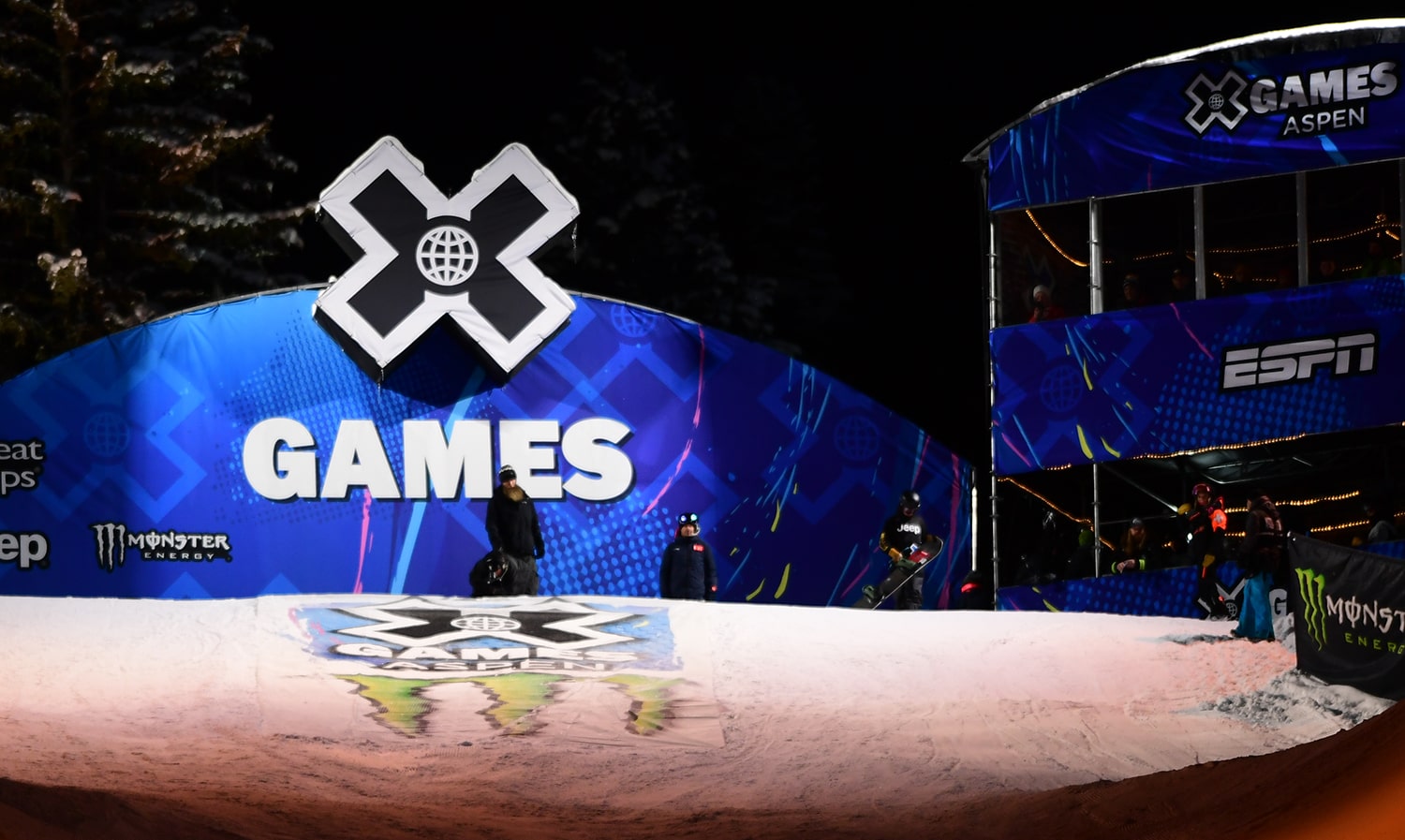[iframe id=”https://www.youtube.com/embed/-m6LoUNYZhQ?ecver=2″]
The Freeride World Tour (FWT) is the world’s biggest freeride event, open to both skiers and snowboarders alike. To earn a ticket to the big show, athletes first compete in qualifying competitions (FWQ), staged around the globe. The Tour spans some of the steepest faces in the world, under varying conditions, with no benefit of a practice run. Accumulate the most points during the season and you’ll be crowned World Champion.
We recently caught up with several of the athletes to help provide an insider’s perspective of what it’s like on the tour, including:
George Rodney: In 2015 he joined the FWT and held down the top spot in both Fieberbrunn and Alaska, scoring big with clean, creative lines. George went on to join the rarified air of rookie FWT Champions, taking home the overall title that same year.

Credit: Freeskier.com
Hazel Birnbaum: A regular threat for the podium stand, she has held down the top spot no less than three times in the various FWT competitions. In 2014 she took home the Women’s FWQ Title and just a few days ago (March 2017) Hazel finished up the Fieberbrunn segment of the FWT on the podium yet again.

Credit Freeride World Tour
Logan Pehota: Logan made a big splash on the FWT his rookie year, 2016, besting the competition in Haines, Alaska and rounding out the season in 2nd place overall. Now in his second season on the FWT, he recently secured a podium position placing 2nd in Fieberbrunn, Austria.
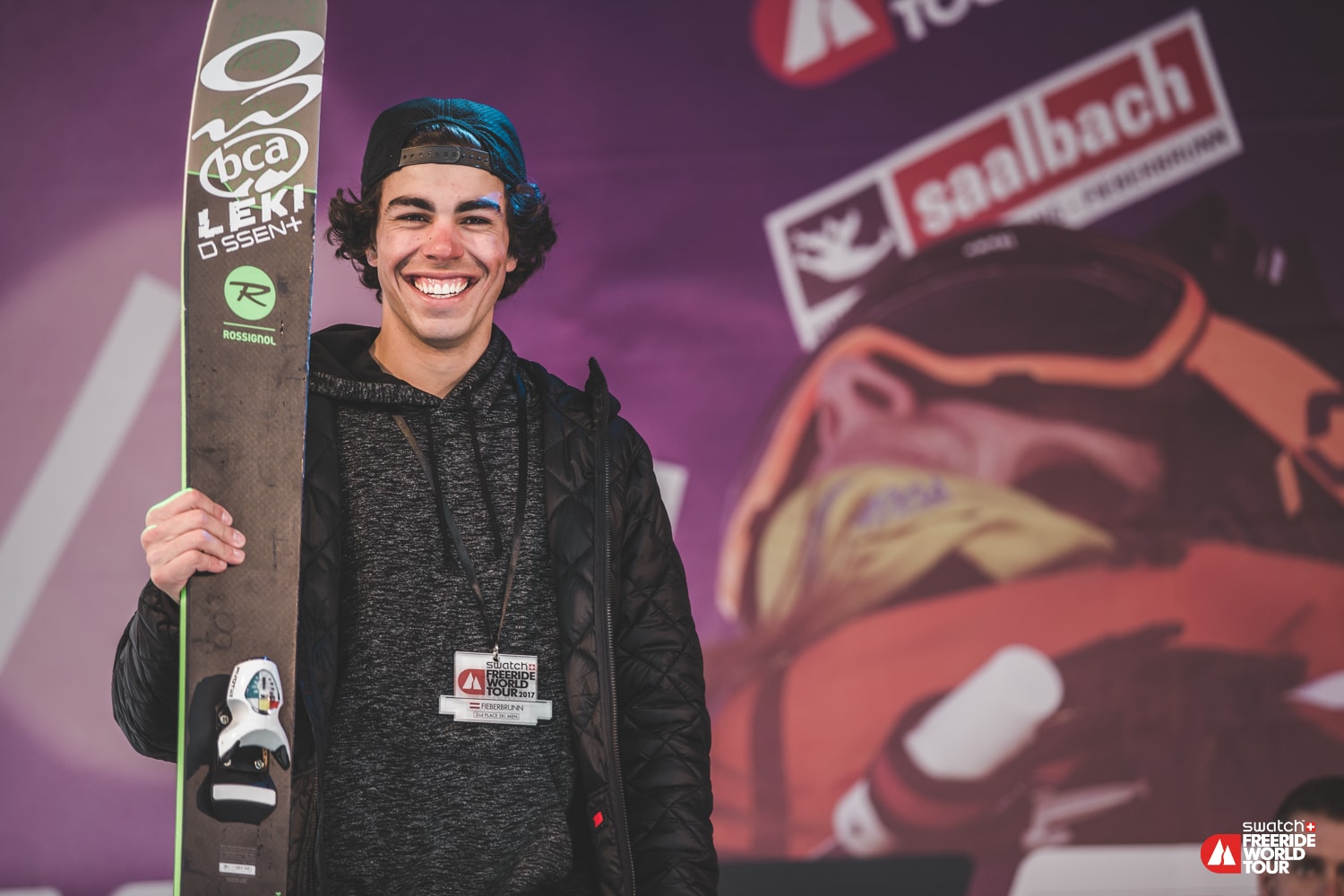
Credit: Freeride World Tour
Francesca Pavillard-Cain: Francesca broke onto the Freeride World Qualifier (FWQ) scene in 2012 with some big finishes and the following year finished the FWQ in first place, overall. The next few years on the FWT saw Francesca on the podium numerous times.

Credit: Facebook
Here you have it – An Insider’s Perspective on the Freeride World Tour: Interviews with the Athletes
SnowBrains: Can you share your evolution to skiing on big terrain and joining the FWT?
(George Rodney): “I was born and raised in the suburbs of Denver Colorado, fell in love with the sport of skiing in Aspen, and then fine tuned my skills as a ski racer in Summit County. I have always attributed my fast rise to success through the Free-ride competition scene to my ski racing foundation. The technical and physical aspects are a plus, but I think the biggest thing was learning how to compete, the mental aspects and most importantly inspection.”
(Hazel Birnbaum): “I grew up in the sunny state of Alaska, ha ha . No really I’m from Moose Pass, Alaska. I learned to ski at Alyeska resort, night skiing on straight skis, face covered in vaseline to keep frostbite at bay. Those were the days…. Anyways, at 18 I moved to Lake Tahoe to be a ski patroller for one winter and well , fell in love with the Sierras and have been here ever since. I patrolled for 8 seasons at Kirkwood Mountain resort and I largely credit my move to freeskiing competitions to my patrolling days at Kirkwood.
We had the “Kirkwood extremes” every season there for many years. I knew then I wanted to be part of freeskiing competitions,, it seemed so creative and fun.”
(Logan Pehota): “I want to say I kind of had a break through a few years ago where I just told myself to start sending it and not being a pussy about anything yet I still try to stay very calculated and you’ll rarely see me hit something where I know I can’t stomp it.”
(Francesca Pavillard-Cain): “As a kid growing up in Crested Butte, big mountain skiing was the standard. I tried ski racing but it wasn’t my cup of tea. Exploring big mountain terrain was how I spent time with my family. I started competing in the junior category at the adult big mountain events (before there was the junior tour). After, I decided to go to school at Western State Colorado University where I could study and compete. WSCU provided me with world class training and by my junior year I qualified first for the FWT!”

Credit: Freeride World Tour
SnowBrains: What’s your favorite aspect of being on the FWT?
(George Rodney): “Its this hard to describe feeling and vibe about the whole thing, I think it comes from the weird balancing act that is successfully mixing competition with extreme sports and the relationships that develop. I think is is something special to sports like skiing, where cultures develop strong enough to where the sport essentially becomes a life style. This vibe is certainly present at things like FWQ events, but it really comes to life on the FWT because were all working in close quarters together on the crazy roller coaster that is the FWT. A good portion of FWT athletes are not only on the road for moths at a time but traveling though multiple foreign countries, sometimes with only a days notice. Many of us end up eating, sleeping, and traveling together before competing, this saves us all money plus makes it way more fun. Its really just a big family where every one wants to win and be crowned the best, but in order to have fun and be successful you have to realize that its really just you and the mountain and that in the end the mountain always wins, so have fun with your friends.”
(Hazel Birnbaum): “The ability to travel the world with like-minded people who share your passion for being in the mountains is the best part of the FWT for me. It is inspiring to see everyone following their bliss and dedicating their lives to the pursuit of skiing, of course. Also, I love how it pushes me as an athlete to be stronger. But for me it mostly comes down to the people and places I get to meet and see.”
(Logan Pohota): “Just the environment. It’s crazy hanging out with such like-minded people who are always down to have a good time!”
(Francesca Pavillard-Cain): “The FWT really treats their athletes like professionals. After years of dedication to training and competing, not to mention the costs, its nice to reap the rewards. But the best part of the FWT is the traveling; getting to ski in new places around the world is the dream!”

Credit: Francescaaceblog.com
SnowBrains: During competition on the FWT, what elements are you looking for in a contest line? How do you balance the risk v. reward of a particular line?
(George Rodney): “Risk v. Reward… Great question. It’s really the name of the game. Risk v. Reward is what it really comes down to, be that in competition, filming, or sending it with the boys on a pow day. The hard part with things like filming and competitions is that there is an increase in reward, especially in competitions where the reward is upfront and out on the table. With this in mind I try to pick lines that I want to ski regardless of competition, something I know I will enjoy, that is after all the whole reason I ski in the first place. The rest is about finding a unique line the gives the best overall impression, a technical line, fluidly and flawlessly executed, and done so with style. Don’t scare the the people and judges but definitely get them on their feet and keep them on their toes.”
(Hazel Birnbaum): “I try to look for in a line, something that will be fun and inspiring . If I’m having fun then it shows in my skiing and the judges see that. It’s a pretty simple theory, but tends to work.
Risk vs. reward is tricky and is a factor behind almost every decision I make on some level. I use fear more as a boundary to assess risk. For instance, if I have chosen something to ski in a competition that scares the hell out of me, it may not be the right choice. That fear is a guide line. I want to dabble with it but if I am totally engrossed in it, I’ve gone to far, which usually means the risk is too great.
We all take risks, it’s the ability to manage those risks which will give you longevity in your sport. By knowing myself as an athlete, what I’m good at, if I can make quick decisions or not helps me manage my personal risk. Like fear I have to dabble with risk, and my level or risk may be totally different than the next person, but finding a balance or knowing where your personal line is can mean the difference of an amainzg day pushing yourself or catastrophe. After making many decisions in many situations, after injuries, after emotional highs, and lows you get to understand your personal risk level.”
(Logan Pehota): “This is really hard because I personally like people to push the limit of the sport but, having to deal with a cut definitely makes people tone down the risk on their runs a lot I’d say.”
(Francesca Pavillard-Cain): “It always a challenge to find something original. When I see a skier do something totally different than other competitors it’s so impressive. I try to find an original and steep line that for the most part feels like it’s within my comfort zone. However, ideally at least one of my airs will be out of my comfort zone. That way I can focus my energy on the tricky parts of my line.”

Credit: Facebook
SnowBrains: What are your thoughts on the safety aspects of riding the terrain “on sight”?
(George Rodney): “Being able to visually inspect a line and execute it flawlessly is really the number one element in the making of a successful big mountain skier, and its also what makes it so difficult. By not competing this season I have had the time to take these visual inspection skills and use them in new back country skiing situations, and what I have found is that the FWT has been able to create a competition environment which allows competitors to only focus on visual inspection in a safe way. The FWT does this successfully by mitigating and managing the other inherently risky aspects such as Avalanche danger and companion rescue, all aspects which actually take precedence over on-sight visual inspection when skiing big mountains in the back country outside of competitions. What does this mean? The FWT certainly has its up and down sides, but in the end I find it to be the safest environment for big mountain skiers to showcase their skills and push their limits, and this is only possible because of the riders ability to solely focus on the line they are about to ski.”
(Logan Pehota): “Unfortunately a lot of these competitions don’t have the best conditions, which really hinders the skill level of the contest.”
(Francesca Pavillard-Cain): “The sport is already dangerous enough. I think its imperative that organizers take every precaution possible, that way athletes can focus on their run. When there are dangers they need to be clearly communicated. That is why allowing every athlete to see the forerunner should be mandatory.”

SnowBrains: How valuable is the athlete avy orientation?
(George Rodney): “Considering my last point it may not seem all that important because of the abundance of safety precautions present at all FWT competitions. All riders are now required to wear airbags along with the the standard beacon, shovel, and probe, all arguably unnecessary, excluding the beacon and air bag, for riders in professional competitions, because as competitors they will never be the ones rescuing anyone. What is important is the promotion of back country safety, practicing what you preach, plus always being prepared. That being said it never hurts to have an intricate understanding of snow science and safety when skiing big lines. This way you can find the softest snow and find lines that won’t sluff out on you half way through.”
(Hazel Birnbaum): “Avalanche safety and education is paramount for any athlete or person exploring the mountains. Education, practice, and implementation!”
(Logan Pohota): “Safety first, as they say.”
(Francesca Pavillard-Cain): “Avi education is a huge part of freeride skiing. Although most athletes have good avi orientation there is still a need for constant and continued education. Having a good grasp on mountain and snow conditions can be a big advantage for a competitor.”
[iframe id=”https://www.youtube.com/embed/-6VAGBDLD9o?ecver=2″]
Logan Pehhota’s winning run in Alaska, 2016.
SnowBrains: Can you share your thoughts on the pressure to perform?
(George Rodney): “Coming up from the JFT and FWQ to the FWT, and especially the year I spent injured in the middle, my mind set was always that pressure makes diamonds. This is something I still believe as some of the most impressive runs I have ever, and probably will ever ski, have been in competition and are due to that pressure. However it’s a thin line to walk, the pressure can be very hard to deal with at times, as it can be your life that’s on the line, but then the reward factor comes into play again and this combined with the risk and pressure of it all can lead to bad decisions. I guess in the end the pressure is what defines competition, especially in extreme sports where the pressure is always on, regardless of competition.”
(Hazel Birnbaum): “The pressure to perform is always there, but it’s mostly personal pressure. Personal pressure to not let people down that care about you and not let yourself down. For example, it’s being in the start gate and thinking, ‘Well, here I am, I can’t feel my legs again, …what is everyone thinking? … Don’t mess up…. There is a giant camera in my face, and a helicopter buzzing over head.’ I simply don’t want to fail. But when the announcer starts the 10 second count till I drop, I think I might pass out or just freeze and not even move. When I drop, all of the extra stuff just fades out and I do what you’re meant to do, ski. It’s an incredible feeling. It is exactly where I am meant to be at that moment and when you get through the start gate, you just want more. It’s crazy: if you don’t do as well as you would like, you want more; if you perform well, you want more. It’s addicting.”
(Logan Pohota): “Everybody wants to be on top and when you’re not it sucks. But, it is what it is, and you just gotta focus on the next.”
(Francesca Pavillard-Cain): “It is always easy to say “just have fun” but the fact of the matter is there is more to it. There is the helicopter, ceniflex, spectators (around the world) and judges all on your mind when you drop in. On top of that there are contracts and sponsors that wiggle their way into your thoughts. The mental side of competition is definitely the trickiest part. I can’t say I have the answer, sometimes you are on it and you can clear your mind other times it all gets in the way and can really affect performance.”
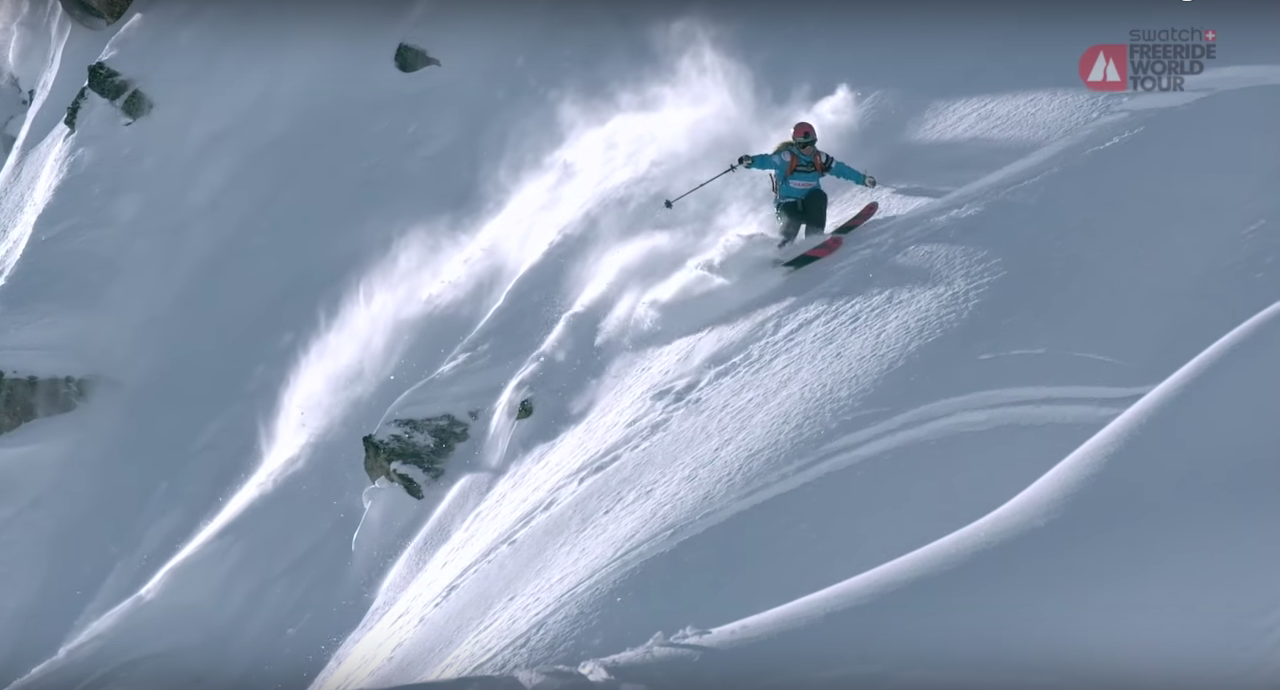
SnowBrains: How about your most memorable FWT experience?
(George Rodney): “I always get asked this question, and it’s always the hardest. My first year on the FWT was the greatest one of my life. I accomplished a life long goal, faster than I thought realistically possible, traveled around the world, and grew more than I could ever explain as a skier and person. One memory that really stands out from the rest is winning the overall title in Verbier, Switzerland. I was literally on top of the world, all the pressure had finally lifted from years of working towards that exact moment. Then to top it all off, I got to share it all with my newly found FWT family along with my real family who surprised me by showing up at the finish – mom, dad, and my brother from anotha motha. Being forced by the locals to drink copious amounts of their homemade liquor, which had spiders fermenting in it, was also a rather memorable experience, especially picking the spinners out of my teeth while on top of the podium.”
(Hazel Birnbaum): “The first comp I ever won and received the “sick bird” belt buckle for was pretty amazing. It was in Chile, in 2014. I raised money to go to South America via a crowdsource fundraising platform. I hadn’t skied a single run since April and it was September and I literally rolled up, picked a line via visual inspection, which was something I had never done before. I picked a line that was exciting and inspiring for me, something I still try and do. I remember just feeling very happy to be there. It was amazing to want something so much and achieve it. I will never forget that moment.”
(Logan Pohota): “Winning Alaska.”
(Francesca Pavillard-Cain): “Getting on the podium is always thrilling and indescribable but I would have to say competing in the first ever FWT event in Alaska was an all around amazing, beautiful and breath taking experience!”
SnowBrains: What’s the best advice you were ever given?
(George Rodney): “During my first year as a big mountain skier, my first time meeting the head judge of the JFT, the late Jim Jack, he approached me and gave me this advice as if we had been life long friends. Always consider “Risk v. Reward.” I think about this every day with everything I do, and to this day it has only let me down when I haven’t followed it.”
(Hazel Birnbaum): “At the end of the day, it’s all for fun! If you’re not loving it, then its time to make a change.”
(Logan Pohota): “If you ain’t first, you’re last!”
(Francesca Pavillard-Cain): “Keep it simple, stupid.”

The next stop on the 2017 Freeride World Tour is Haines, Alaska held on March 18- 25, 2017.
Thank you to all of the athletes for their time and contributions.

